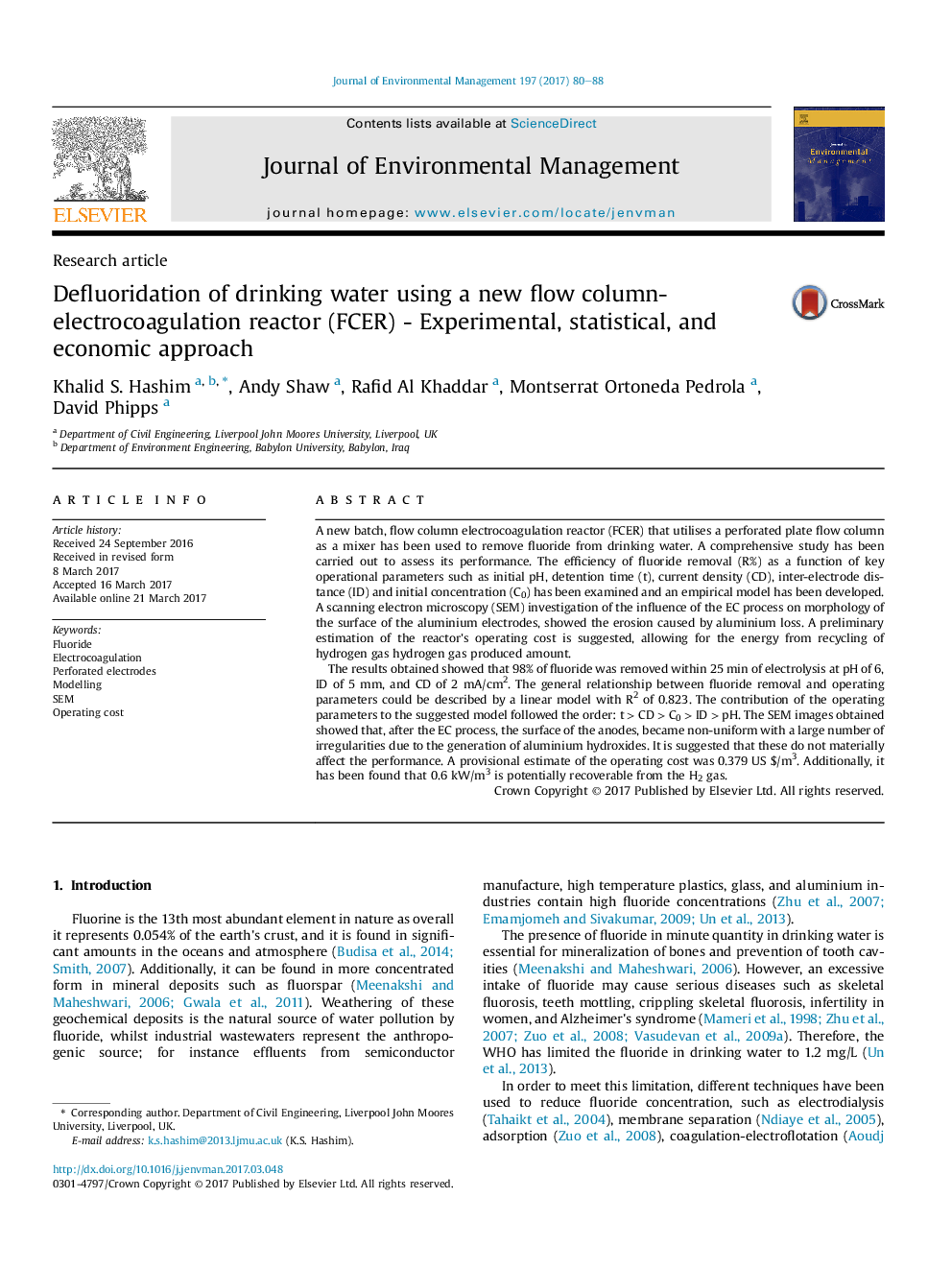| Article ID | Journal | Published Year | Pages | File Type |
|---|---|---|---|---|
| 5116934 | Journal of Environmental Management | 2017 | 9 Pages |
â¢The new reactor, FCER, removed 98% of fluoride.â¢Performance of FECR, in terms of fluoride removal, was modelled with R2 of 0.823.â¢FCER emits H2 gas enough to produce energy of 0.6 kW/m3.â¢SEM images showed many dents on the anode due to the production of Al hydroxides.â¢FCER required 0.379 US $/m3 to remove 20 mg/L of fluoride from drinking water.
A new batch, flow column electrocoagulation reactor (FCER) that utilises a perforated plate flow column as a mixer has been used to remove fluoride from drinking water. A comprehensive study has been carried out to assess its performance. The efficiency of fluoride removal (R%) as a function of key operational parameters such as initial pH, detention time (t), current density (CD), inter-electrode distance (ID) and initial concentration (C0) has been examined and an empirical model has been developed. A scanning electron microscopy (SEM) investigation of the influence of the EC process on morphology of the surface of the aluminium electrodes, showed the erosion caused by aluminium loss. A preliminary estimation of the reactor's operating cost is suggested, allowing for the energy from recycling of hydrogen gas hydrogen gas produced amount.The results obtained showed that 98% of fluoride was removed within 25 min of electrolysis at pH of 6, ID of 5 mm, and CD of 2 mA/cm2. The general relationship between fluoride removal and operating parameters could be described by a linear model with R2 of 0.823. The contribution of the operating parameters to the suggested model followed the order: t > CD > C0 > ID > pH. The SEM images obtained showed that, after the EC process, the surface of the anodes, became non-uniform with a large number of irregularities due to the generation of aluminium hydroxides. It is suggested that these do not materially affect the performance. A provisional estimate of the operating cost was 0.379 US $/m3. Additionally, it has been found that 0.6 kW/m3 is potentially recoverable from the H2 gas.
Graphical abstractFluoride removal at different initial concentrations.Download high-res image (160KB)Download full-size image
